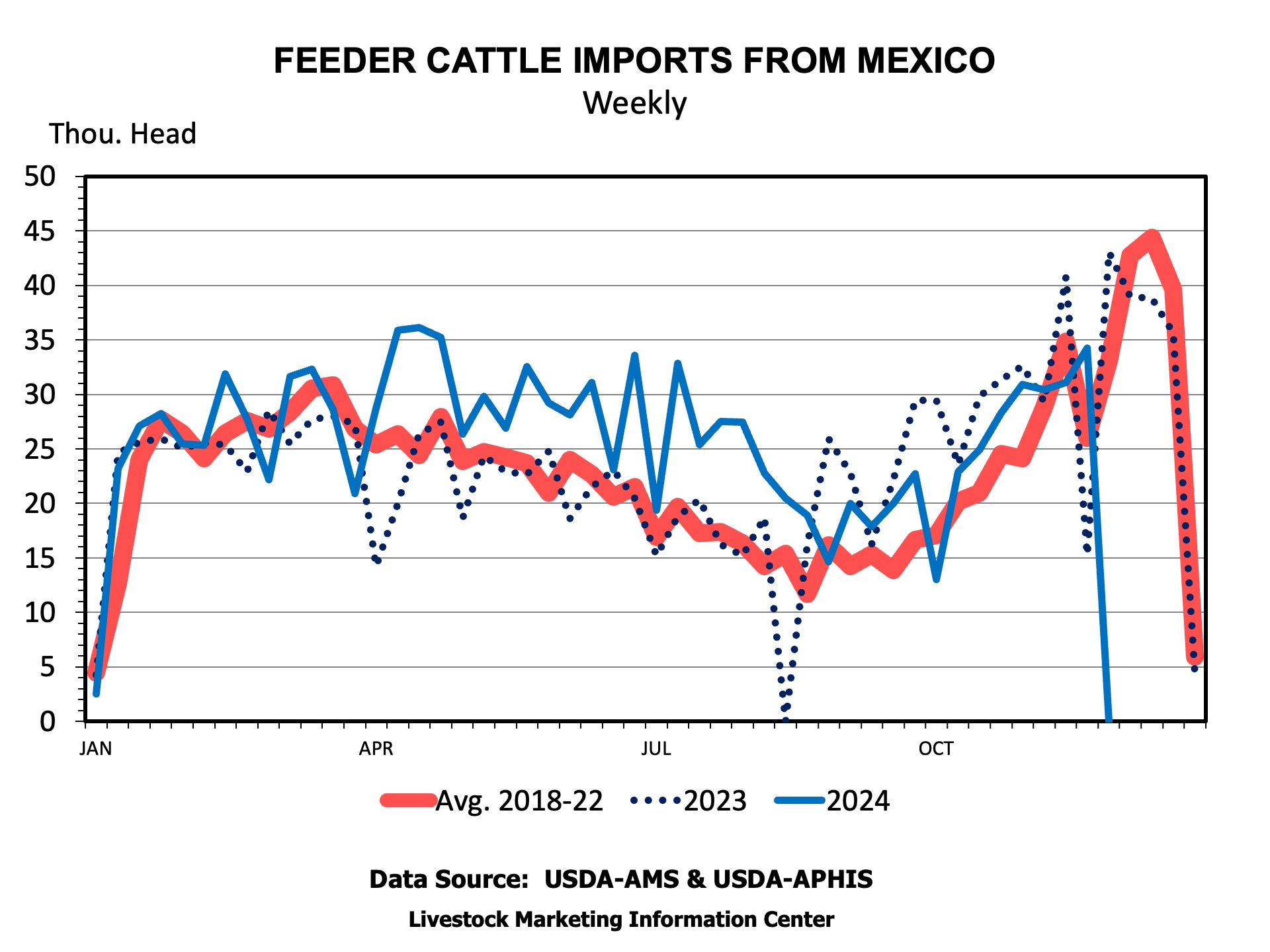Cattle and calf prices keep climbing towards the end of the year. It’s not uncommon for prices to rise late in the year, but this time between Thanksgiving and New Year’s can be volatile. This year-end rain in areas of the Southern Plains and fewer calves for sale are working to boost calf prices while. There is also a week’s worth of data on feeder cattle imports from Mexico which gives some insight on the potential impact of import restrictions on Mexican cattle due to screwworm regulations.
In the Southern Plains, lighter weight, 400-500 pound, calf prices have jumped about $30 per cwt over the last month. In the South, the same weight calves are higher, but have not seen quite as large of increase, up about $25 per cwt. Heavier 500-600 pound steers are up around $20 to $25 per cwt in the Southern Plains and South, respectively. From Texas across the south to Georgia, 700-800 pound feeders are up about $8 per cwt over the same period. Seasonal lows in the calf market are in the rearview mirror for 2024.
Recent rains have helped stocker prices. The drought monitor map indicates some significant improvement across wheat pasture country. Better late than never. The rains have boosted prospects for late pasture grazing and likely boosted supplies of pond and tank water that had run short.
It appears that fewer calves are for sale following the larger Fall runs. Over the last month, fewer cattle have been reported in USDA’s weekly market receipts data. The daily CME feeder cattle index indicates fewer cattle changing hands. Local auction markets around the country also report fewer animals. When combined with rain boosting stocker demand, tighter supplies are further helping prices.
Fed cattle prices are climbing too. Southern Plains fed steers hit $190 last week rebounding from about $185 a month ago. It looks like the cow market has already passed its seasonal low as beef cow slaughter is declining.
The first full week of data on feeder cattle imports from Mexico were released last week. For the week ending November 30th no cattle (0 head) were reported imported through the 11 ports of entry. It’s worth remembering that was Thanksgiving week and mid-week holidays can lead to some wide swings in data. Feeder cattle imports are normally large in November and December as cattle are imported for winter grazing and direct feedlot placement. The timing of the import restriction is likely causing a bigger price impact than it would at other times of the year when imports are typically lower.
Rain and tighter supplies are some fundamental factors at work in boosting calf prices. Those positive factors are likely offsetting the impact of some increasing corn prices. Tighter supplies of claves will continue to boost calf prices in the new year.



Anderson, David. “Rising Prices at Year End.” Southern Ag Today 4(50.2). December 10, 2024. Permalink

